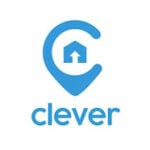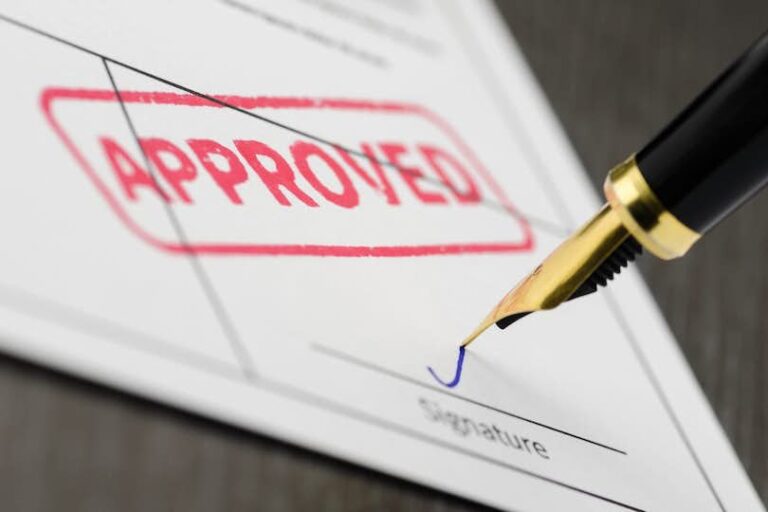The amount of a mortgage payment depends on many factors, including interest rate, term of the loan, and added charges like property taxes or insurance premiums. Let’s break down all the moving parts of the average mortgage payment.

Calculating your mortgage payments is rarely as simple as it seems. Many people simply divide their total loan amount by the months in the loan’s terms, and add interest, and are surprised to find out their mortgage payments are significantly more than they thought.
That’s because many mortgages also include added charges bundled into their payments, like taxes, property insurance, and private mortgage insurance (PMI), all of which can add hundreds of dollars to your payment.
The best way to get clarity regarding your mortgage payment is to consult with an experienced real estate professional. A great agent can answer any questions you might have, and clue you in on exactly what charges you will and won’t be responsible for.
How do mortgages work?
To put it simply, a mortgage is a loan you take out from a bank, with your home as collateral. Assuming the traditional 20% down payment, you’re borrowing an amount of money equal to 80% of your home’s price, and paying it back over a fixed term, usually 30 years, plus interest. If you can’t pay back this loan, the bank can seize your home.
Your monthly payment is calculated by dividing the principal by the number of months in the term, and multiplying that by the interest rate.
Once you add other charges like taxes, property insurance, or private mortgage insurance, you’ve got your monthly mortgage payment.
The 5 Basic Types of Mortgages
Conventional mortgages
A conventional mortgage is a home loan that’s not insured by the federal government. Conventional mortgages fall into two categories: conforming loans or non-conforming loans.
What are these loans conforming (or not conforming) to? This term refers to whether the loan falls within limits set by Fannie Mae and Freddie Mac, the government agencies that back most mortgages in the United States. If the loan falls within those limits, it’s conforming; if it exceeds those limits, it’s classified as non-conforming.
A conventional mortgage is great for a buyer with good credit and income and wants the option to pay less than the traditional 20% down payment. While some conventional loans allow buyers to put as little as 3% down, these mortgages generally require buyers to carry private mortgage insurance (PMI). Though buyers can cancel their PMI once they accumulate 20% equity, PMI can be a significant added expense until that point.
Jumbo mortgages
A jumbo mortgage is essentially the non-conforming mortgage discussed above. This means it’s a conventional loan for a home whose price exceeds the federal loan limits. Jumbo mortgages are commonly seen in expensive markets.
Though interest rates for jumbo loans are competitive with conforming mortgages, they’re more difficult to qualify for. They often require a very good credit score and debt-to-income ratio, and a certain level of assets.
Government-insured mortgages
To promote home ownership, the government backs loans through three agencies; the Federal Housing Administration (FHA), the U.S. Department of Veterans Affairs (VA), and the U.S. Department of Agriculture (USDA).
FHA loans are aimed at buyers who have suboptimal credit scores, don’t have a sizable down payment on hand, or both. They also come with an interest rate as low as 3.5% (as of July 2019). Although FHA loans allow buyers to put down less than the traditional 20%, doing so means you’ll be required to pay mortgage insurance on top of your loan, which will increase your monthly payment.
VA loans offer no-money-down mortgages that don’t require mortgage insurance, with reduced closing costs and low, advantageous interest rates. The only catch? They’re reserved for active duty U.S. military personnel, veterans, and their families.
USDA loans are aimed at low-income buyers in areas the agency has designated as rural. There’s an income limit, but if you qualify, many USDA loans don’t require any down payment at all.
Fixed-rate mortgages
A fixed-rate mortgage is a stable, long-term loan with an interest rate that stays locked in for the entire life of the loan. That means your mortgage payments will be the same for as long as you hold that loan, which guarantees high predictability and stability.
The price you pay for this stability is a slightly higher interest rate than on an adjustable-rate mortgage, which means you’ll pay more over the life of the loan.
Adjustable-rate mortgages
An adjustable-rate mortgage typically comes with a low initial interest rate that can fluctuate later, based on market conditions. This means a buyer could have low mortgage payments for the first few years of the loan, but once the interest rate resets, those payments could increase exponentially.
This mortgage is ideal for buyers who aren’t planning on spending more than a few years on their new home, but it comes with some risk. In the aftermath of the 2008 financial crash, many people lost their homes when their adjustable-rate mortgage payments ballooned to unaffordable levels. If you’re looking into adjustable-rate loans, find one that comes with a cap on how much your interest rate can increase down the line.
How much mortgage can I afford?
Determining how much mortgage you can afford takes an in-depth analysis of not only your income, but your debts and obligations too.
The 36% rule is a good general guideline to figure out how much of a mortgage payment you can handle. It states that your monthly mortgage payment, plus any debt payments you’re making, shouldn’t be over 36% of your monthly income. So, for example, if you make $4,500 a month, and have $500 a month in debt obligations, your mortgage payment shouldn’t exceed $1,120.
Another factor you should consider when you’re assessing potential mortgages is your credit score. The interest rate you qualify for will have a big impact on the amount of your mortgage payment, and how much house you’ll be able to comfortably afford. If you have suboptimal credit, it would be worth your time to rehabilitate your credit score before you tackle a mortgage.
How are mortgage payments calculated?
PITI is a convenient acronym that describes the four main factors that determine the amount of a mortgage payment; principal, interest, taxes, and insurance. Let’s cover each factor, and how it influences the calculation of your mortgage payment.
Principal
This is the amount of money you owe on the property; if you purchase a $200,000 house by putting 20% down, and getting a mortgage for the other $160,000, then your principal would be $160,000.
Keep in mind that the ratio of principal-to-interest in your mortgage payments changes over the term of your loan. Early on, much more of the mortgage payment goes towards interest than principal, but this shifts as time goes on, and by the end of the term, most your mortgage payment is being put towards the principal.
Interest
The interest rate on your mortgage has an outsize influence on how much your monthly payment ends up being. A high interest rate reduces the amount of money you could potentially borrow, while also driving up your potential payment, while a low, advantageous interest rate brings those payments way down, and allows for a larger overall loan.
For example, if you had a 30-year, $200,000 mortgage with a 6% interest rate, you have a monthly mortgage payment of approximately $1,200. If you took out that same loan with a 9% interest rate, the payment skyrockets to $1,609. Though a difference of 3% may seem inconsequential, it adds up.
Taxes
In many municipalities, property taxes are bundled into your monthly mortgage payments. Here, the lender acts as a tax collector, holding your tax payments in escrow before paying the local authorities on your behalf. In high-tax areas, this can add hundreds of dollars to your monthly mortgage payment.
Insurance
If you put less than 20% down on your home, you may be required to carry private mortgage insurance, or PMI. Though this insurance protects the lender, the homeowner is the one who pays for it. Property insurance charges are also sometimes bundled in with the mortgage payment.
The good news regarding PMI is that once the buyer has built up 20% in home equity, they can cancel their coverage.
Next Steps: How to Get Pre-Approved for a Mortgage
If you’re ready to buy a home, the best way to convey the sincerity of your intent is to get a preapproval letter from a lender. A preapproval letter tells a seller that your lender has already scrutinized your finances, and approved a loan for you, so there won’t be any snags or surprises if they accept your offer.
While a prequalification lette r represents a non-binding estimate of how much of a loan you could theoretically qualify for, a preapproval letter is a commitment from your lender to loan you money.
Once you have this preapproval letter in hand, the home buying process will get easier and, potentially, much faster, since sellers will now take you seriously. So make sure you’ve partnered up with an experienced real estate agent, who can ensure you make the most out of the preapproval process, and can help you target and move on your ideal properties in a timely manner.
Clever Partner Agents are top performers in their markets, and can advise you on everything from pre-approval letters, to making an irresistible initial offer, to negotiating the price and closing costs. If you’re ready for an elite, full service buying experience, contact us today for a no-obligation consultation!
Top FAQs about Mortgage Costs
What is the current mortgage interest rate?
As of July 16, 2019, a survey of the largest mortgage lenders in the nation set the benchmark 30-year fixed mortgage rate at 3.83% with an APR of 3.95%.
The 30-year FHA rate is 3.51%, and the 30-year VA rate is 3.54%. For jumbo loans, the 30-year fixed jumbo rate is 4.14%.
What is a good house payment?
Experts suggest your ideal house payment, plus your monthly debt obligations, shouldn’t exceed 36% of your monthly income.
Let’s look at an example. If you make $4,500 a month, and have $500 a month in debt obligations, your mortgage payment shouldn’t exceed $1,120. This figure was produced by multiplying your income of $4,500 by 36%, or 0.36, which comes to $1,620, and then subtracting the monthly debt obligations of $500.
If you follow the 36% rule, you can be reasonably sure that you can meet your mortgage obligations without experiencing undue stress.
Can I get a mortgage on low income?
Yes. Government-backed loans from the USDA and the FHA are available to low-income home buyers. Education programs can help home buyers figure out exactly what they qualify for.
FHA home loans require only a 3.5% down payment, and a sub-optimal credit score is acceptable. USDA loans require no down payment, as long as you purchase a property in a designated rural area; these loans also have an income limit, so they’re aimed specifically at low-income buyers.
Is it hard to get a mortgage?
Whether it’s hard for you to get a mortgage depends on many factors, including income, debt, and credit score.
Lenders decide whether to issue you a mortgage by looking at your financial situation, and what they like to see is outlined the 28/36 rule. Ideally, your household spends no more than 28% of its income on housing expenses, and no more than 36% of its monthly income on total debt payments, which means mortgage plus other debt obligations like student loans, credit card debt, or car payments.
Then there’s the matter of your credit score. If you have a fair-to-poor credit score in the 501-660 range, or a score below 501, you may find it hard to qualify for a mortgage.
What is the difference between getting pre-qualified and pre-approved for a mortgage?
Basically, pre-qualification is an estimate of how much of a loan you could, in theory, qualify for, while pre-approval is a firm commitment from your bank to loan you money.
Pre-qualification and pre-approval are the products of two very different processes. In pre-qualification, you self-report your income and assets to the lender, and they use an algorithm to estimate how much of a mortgage you could qualify for. But they don’t confirm any of the information you give them, and they don’t examine your finances.
With pre-approval, the lender carefully examines your finances and bank accounts, does a hard credit pull, looks at your employment history and tax returns, and tallies all your debts before deciding how much they’ll loan you. For this reason, sellers take pre-approval letters much more seriously than pre-qualification.

